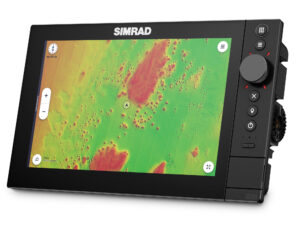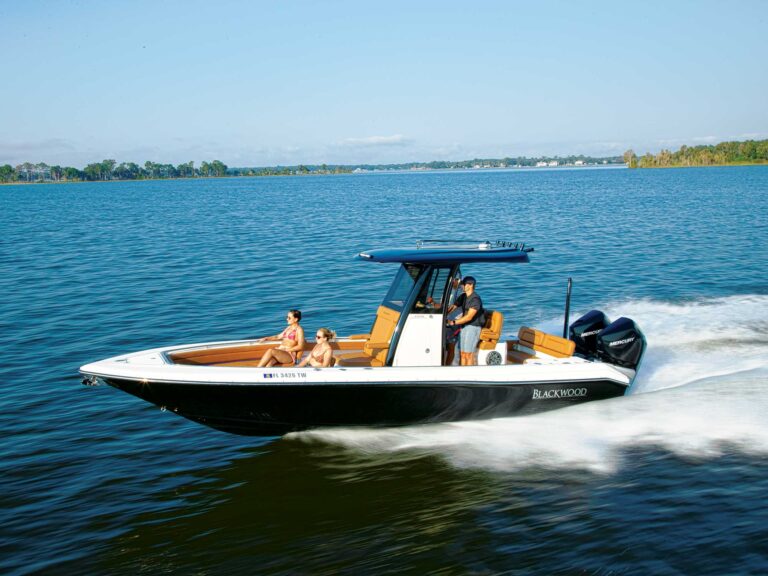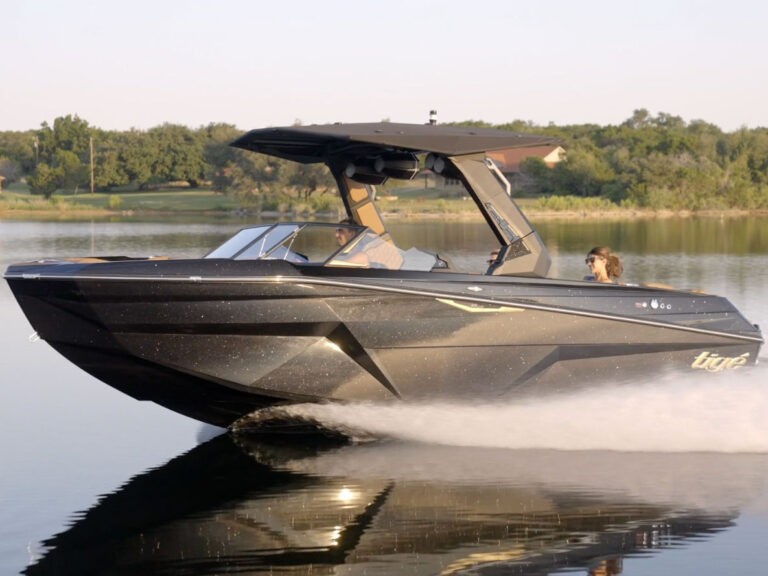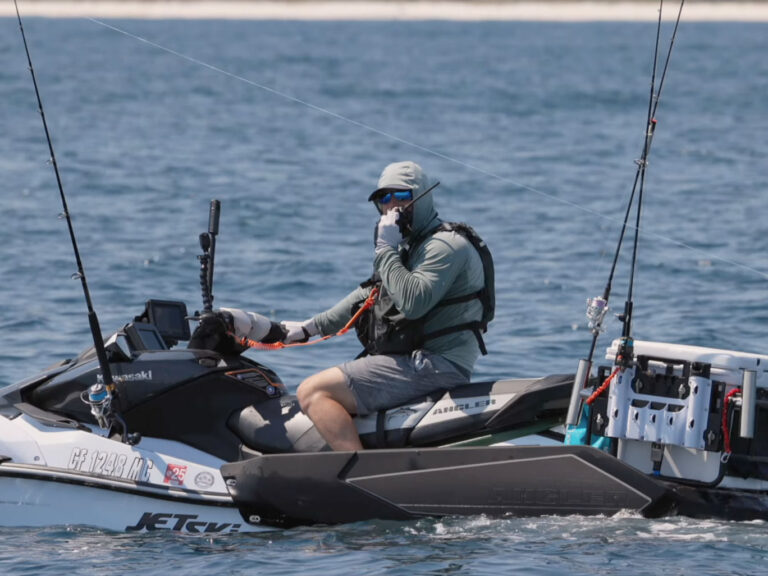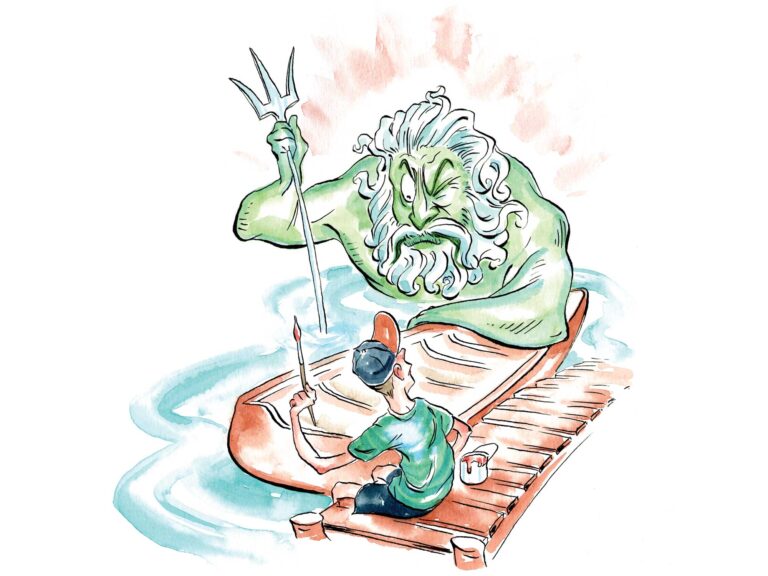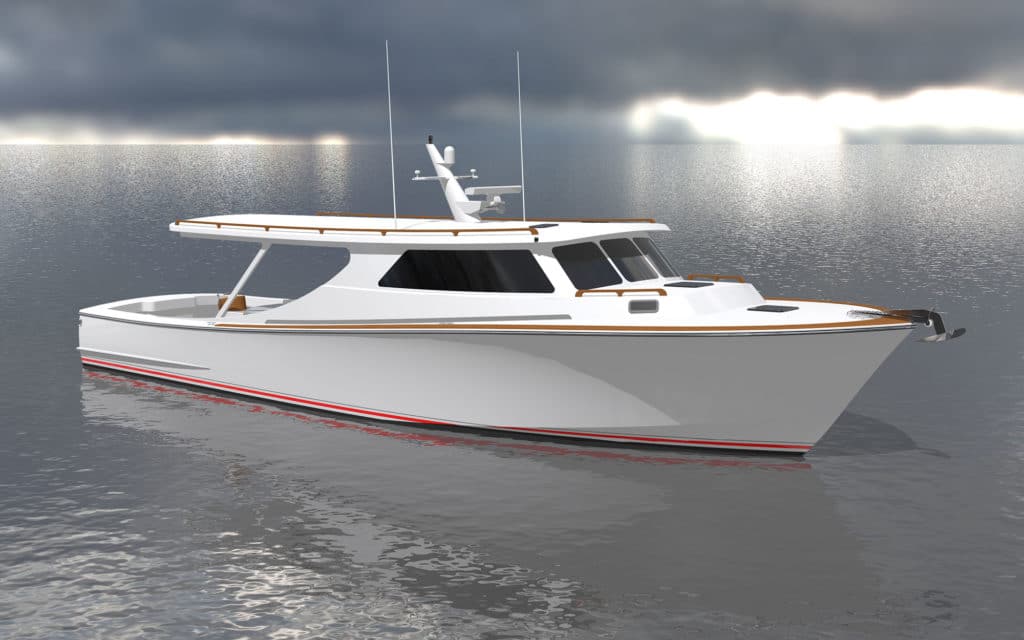
“Can you build me a 55-foot deadrise that can run 55 knots?” That’s what Jerry Murrell asked the crew of Composite Yacht located in Trappe, Maryland, on the famed Eastern Shore. Murrell loves the graceful, traditional profile of the sheerline, collar boards and deckhouse on these indigenous Chesapeake working boats.
Classic wooden “bay-built” hulls meet a variety of needs, from hauling crab pots and oystering to charter fishing. They feature sharp bows, big cockpits, forward helms, and semi-displacement, shallow V-hulls and straight-shaft inboards. They’ve never been built for efficient speeds above 20 mph, much less a soft ride at such velocities.
How did Murrell assemble a team to pull it off?
The Design
Martin Hardy and his sons, Lewis and Rob, of Composite Yacht (compositeyacht.biz) went to work. “Let’s hire an architect, build it on paper, then test it.” They signed naval architect Lou Codega, who’s drawn Regulator Boats, Cabo Yachts and others. Tank testing took place at the venerable Stevens Institute of Technology.
“The owner wanted a deadrise-style boat that’s really fast. The tricky part of this design is the forward position of the helm,” Codega says. As most boaters know, the ride gets rougher the closer that someone one sits or stands toward the bow.
“To run soft in bay chop, I had to make the forefoot as sharp as possible without inducing bow steer,” Codega explains. “Being big is a trait that buys you ride quality, especially in the Chesapeake.” The boat measures 55 feet, with only 16 feet of beam. A narrower beam helps in achieving a softer ride and higher speed goals.
“Styling comes from traditional deadrises,” Codega says. “But she’s pure go-fast, with 17-degree deadrise at the transom twisting to 48 degrees at the bow.” The waterline is narrow up forward, with high chines. The boat is designed around the twin 1,940 hp MTUs, with 1.75-to-1 ZF V-drives turning custom props through wake-adapted struts and rudders in shallow pockets, and balanced with 7-degree shaft angles and Humphree interceptors across the transom. That translates to wicked fast.
Codega lauded Composite Yacht as “the best builder I’ve worked with,” citing, “a special chemistry between boat owner Jerry Murrell, the Hardys and their team.”
Speed, as always, costs.
“The top 5 percent of our speed took 50 percent of our budget,” Lewis Hardy says. “Jerry allowed me to hire anybody I needed to make this project a success.” That included hydrodynamic specialists who used the design and the Stevens Institute data to simulate the bottom running at speed. “The simulations let us see pressure points,” Lewis explains. “They looked like clouds, showing cavitation. Then we simulated modifications to eliminate those pressures.
“We built test laminates,” he continued, “and then a CY 26 test boat. The outer layer is Kevlar for puncture resistance.”

The Build
The rest of the CY 55’s hull is 95 percent cored carbon fiber with urethane acrylate resin that is laminated, vacuum-bagged, and cured in an oven, with the temperature and resin viscosity carefully controlled, a technique borrowed from the aerospace industry.
When fully loaded with the engines, generator, Seakeeper gyrostabilizer and 1,900 gallons of fuel, the boat weighs 55,000 pounds. Keeping weight down is imperative for keeping speed goals up.
“Everybody knew what was needed,” Lewis says. “Jerry stuck to his concept, and our Composite team looked constantly for small weight reductions that added up. The keyword every day was ‘remain disciplined’ in all facets of the build. There was no client wish list, no incremental weight gain. We were weighing the trash cans at the end of every day.”
The owner stayed with the simple accommodations necessary for a dayboat’s needs. One example of this is that the boat is fitted with a relatively small 12.5 kW generator to run air conditioning, the Seakeeper and other 220V AC systems, which are lighter than 110V because of thinner cabling. Controlling all of that power on V-drives required special controls “almost like rheostats” to ease the boat forward in close-quarters maneuvering, Lewis says.
At press time, Skinny Witch was running a whisker short of the goal, topping out at 54.9 knots. “The wheels are a tad out of square,” says Lewis of the 34.75-by-53.9-inch Michigan Wheel Marlin four-blade propellers. “We still have more rpm left.”
The boat currently accelerates from zero to 40 knots in 13 seconds.
Read Next: Learning the History of Downeasters

Chesapeake Deadrise Origins
The Chesapeake deadrise got its name from the hard-chine, cross-planked, V-bottom wooden construction technique that local builders developed for sailing oyster dredge boats in the late 19th century. The term refers to the rise above dead level of the boats’ chines, originally measured in inches and now in degrees. With the advent of gasoline and diesel power, the technique morphed to produce the semi-displacement designs of today, many in fiberglass.


